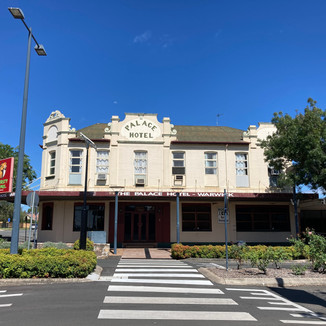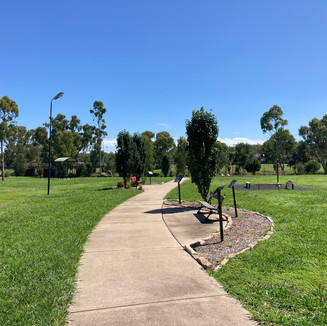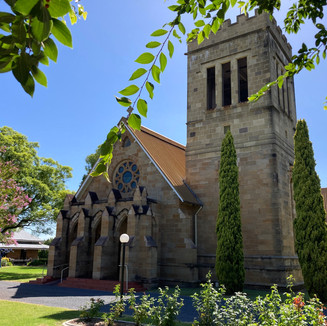Explore Warwick
- Wander * Explore * Discover
- Jan 31
- 3 min read
Updated: Feb 25
Warwick ~ Queensland
Warwick is a rural city on the Condamine River, 158 kilometres southwest of Brisbane.
It is known as the Rose and Rodeo City, due to the many roses around the city and its famous rodeo that is held in October each year. Warwick has wonderful historical buildings, lovely gardens, interesting street art and sculptures.
When we visited, we wandered around the city centre, saw sculptures in the park, and admired the buildings on the heritage walk. We drove along Falls Drive to see Queen Mary Falls and visited Glengallan Homestead. We also visit the Warwick Museum and the Rodeo Heritage Centre.
As we wandered around the streets of Warwick, we saw wonderful heritage sandstone buildings, interesting street art and some beautiful roses. The city centre also has many shops to browse in, restaurants, cafes and a shopping mall.
There are also many lovely gardens and parks throughout the city. Leslie Park in the centre of town features the heritage-listed war memorial that was built in 1923 to honour the men who fought in World War 1.
At Queens Park, a 15-metre-high metal sculpture shows the many roles horses have played in the town’s history. It incorporates horses pulling Cobb & Co carriages, farming and being part of the famous rodeo.
As we wandered along the Condamine River in Federation Park, we saw several interesting sculptures that are part of the Southern Downs Stone Sculpture trail. There is also a short walk through the park with informative plaques about the history of Warwick.
Warwick is one of Queensland's earliest settlements and has many heritage-listed early European Buildings. Along the heritage trail, you will see many of these fascinating buildings.
The Warwick Court House was opened in 1886 and is still in use today.
St Andrew’s Uniting Church was completed in 1870 and is still used as a church today.
The Post Office was built from locally quarried sandstone and opened in 1898. This stunning building is one of Warwick’s most prominent landmarks and is still used as a Post Office today.
The Town Hall was also constructed from local sandstone and opened in 1888. It is one of the oldest local authority buildings in Queensland and now houses the information centre.
St Marks Anglican Church was built in 1868 and is still used today.
St Mary's Catholic Church on Palmerin Street is a landmark in Warwick and is the highest and most prominent building in town. This stunning church was built between 1920 - 1926 and the tower is 29 metres high.
The Abbey was built in 1891 and used as a convent and boarding school from 1893 to 1888. Since 1994, the building has been privately owned and used as a boutique hotel, wedding and events venue.
Approximately 40 kilometres from Warwick you can discover three wonderful waterfalls along Falls Drive in the Main Range National Park. We started with Browns Falls and after a 600 metre walk along the edge of Spring Creek we saw the 15 metre waterfall cascading over the basalt columns.
Daggs Falls is the easiest waterfall to see as the viewing platform is right near the carpark. Daggs Falls drops 38 metres over the cliff and into the rocks below.
Queen Mary Falls plunges 40 metres over the cliffs and into a rocky pool at the base. There is a 2-kilometre circuit walking track where you can see the waterfall from the top and at the base.
Fifteen kilometres from Warwick you can explore the Glengallan Homestead and Heritage Centre.
The Glengallan Homestead is a stunning heritage-listed two-storey homestead that was built in 1867. The homestead was uninhabited for almost 100 years before a team of volunteers in the 1990s stepped in to restore the property.
In 2002 the property opened to the public and today you can pay to take a self-guided tour through the Homestead and the gardens. You can see the rooms that have been restored and filled with period furniture and read the signage that tells the story of its past. We also enjoyed lovely scones with jam and cream in the cafe after wandering through the homestead.
The Warwick Museum Complex on Dragon Street has seven buildings to explore, including Pringle Cottage. Pringle Cottage is a two-storey cottage built in 1870 by John McCullock, a stone mason from Scotland. He also built the Town Hall, the Uniting Church, and The Abbey.
The museum showcases the history of Warwick's people, activities and buildings and has an extensive collection of historical household and industrial items, photographs and farming machinery on display.
The Australian Rodeo Heritage Centre is open Monday to Friday from 8.00 am to 4.00 pm. This museum features memorabilia and displays about the history and traditions of rodeos.
_edited.png)




























































Comments